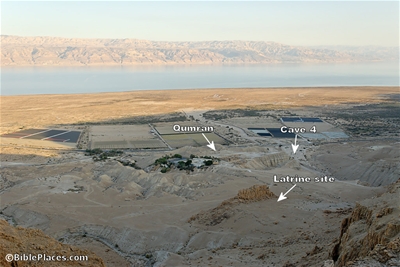Last year I went on a 5-day trip to Cyprus with a friend. This was part of my project to visit all of the sites that Paul traveled to, and to include them on a new “Greek Islands” CD in the Pictorial Library series. At the end of the trip, I sat down and wrote a series of posts for the blog, which I never got around to posting. Now with the end-of-the-semester time crunch, this is a good opportunity to share these, with the hope that they are both instructive and enjoyable.
I’ll start with some of the negatives, moving to some of the more positive experiences and insights in later posts. Overall, I would characterize this trip as less enjoyable to me than other trips because:
1. There are only two biblical sites (Salamis and Paphos) and the connection there is very limited; furthermore, there is nothing at the sites that you can directly connect with the biblical account.
2. The weather was overcast more than sunny, making photographs more dreary. I would recommend visiting in April instead of March.
3. The costs were significantly higher than expected (e.g., $80/day for rental car; $45 for a cheap hotel).
4. Cyprus history is not well known to me, and as I learned more about it, I would confess that it did not become very exciting to me. There are connections with Israel/Canaan, but these are less than one might expect. The Myceneans and Minoans, who I would expect to have more of a connection with this island, don’t seem to. There is not much evidence of Jewish presence.
5. The divided nature of the island adds another challenge to travel logistics. It did seem to me that there was no control at the border, such that we could have stayed many days on the northern side and the Greeks wouldn’t know (though the rules say you can’t stay overnight). They didn’t stamp or record our passport when we left, and no one looked at it when we came back in. I could have used another day on the northern side to visit Kyrenia and some sites to its west.
6. They drive on the “wrong” side of the road here (as a former British colony). You drive from the “passenger” seat, and shift gears with your left hand. Of course you learn how to do all of this when starting at the rental car agency in the middle of the big city’s downtown.
7. Most of the sites were not well-marked, so oftentimes we didn’t know what we were looking at. And there were not brochures to explain it either. I don’t know of a good archaeological guide with plans of all of the sites. The Fant & Reddish book was helpful for what it covered.
8. The ruins are not dramatic. There are three sites that have more to see: Salamis, Kourion, and Paphos. But compared with other sites (such as in Egypt, Turkey, Greece, Rome), these are just not impressive.
9. We were a little too early in the season to see all of the colors of spring. The coastal areas were quite green and had flowers, but the mountains were still coming out of winter.
10. Cyprus is largely a tourist vacation spot today, and in many ways it seemed like a great place to come and spend a week with our wives. But it wasn’t warm, we didn’t spend any time at the beach, and our wives were not with us.

From the ANE-2 yahoo group:

